Idea by
Asya Ilgun
Artificial Life Lab / Graz
http://zool33.uni-graz.at/artlife/
Call for ideas 2019
Three Dimension in Action // Citizen Edition
Three Dimension in Action // Citizen Edition
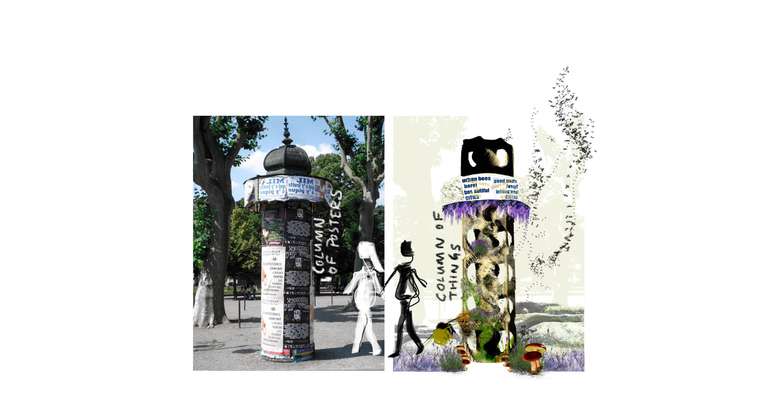
- New alliances
Doing your own thing is important. Bees, as important occupants our cities, are less and less prepared to accept imposed rules and patterns of behavior. However, current tradition in architecture clearly does not work when it comes to "life" other than humanbeings.
How can we create city oasis for the many species living alongside us? The answer lies behind the disciplines around design, science and technology. As architects, we are able to synthesise ideas, customise tools, find material alternates and write stories about "life" that is imagined.
This project is about bringing public and specialists together for a paradigm change in everyday objects in our urban landscapes. Sharing the know-how and know-why is where we start ..
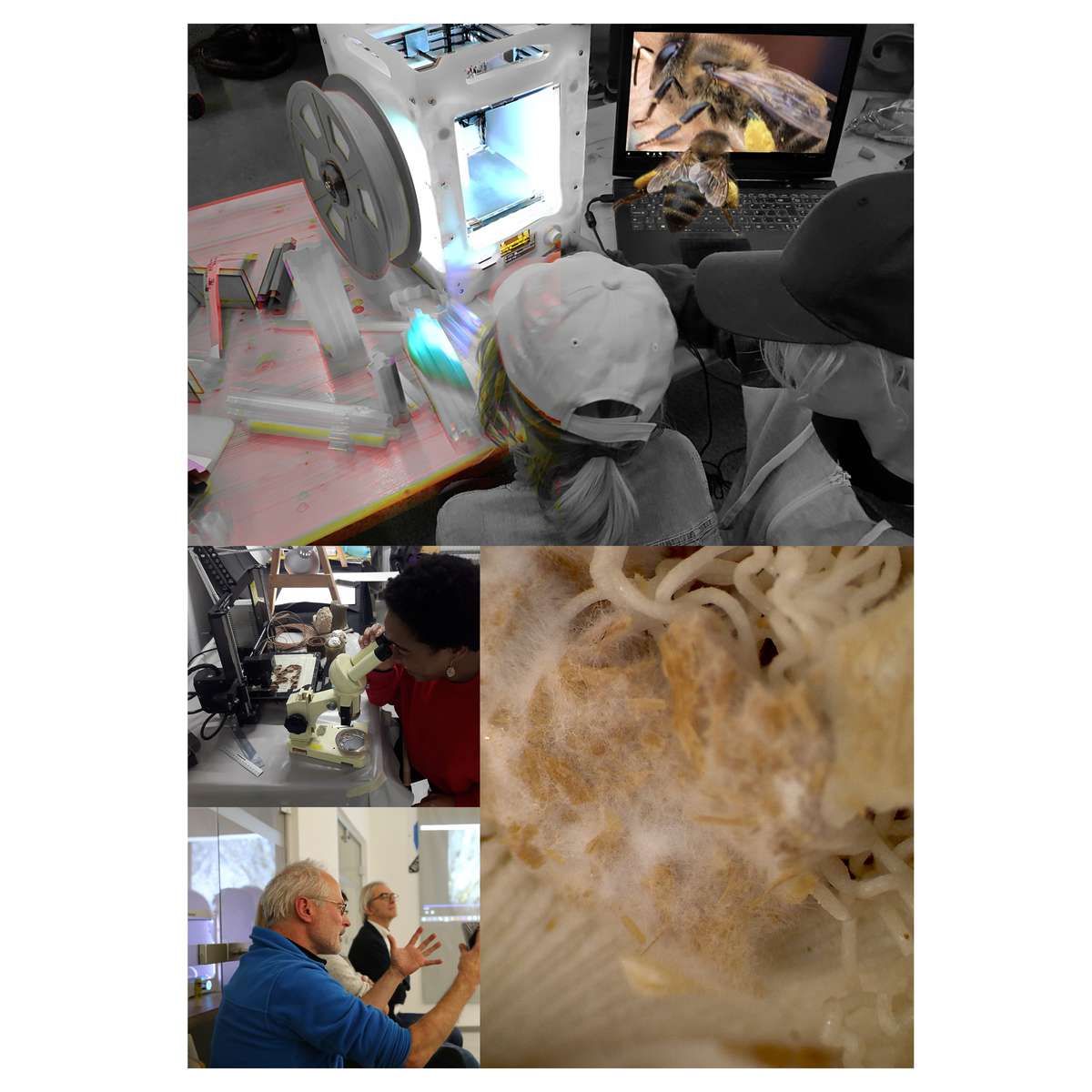
1) Citizen Scientists as kids. Setting : Copenhagen Makers Festival'17 / Bee A Bee Workshop by Asya Ilgun. Elisa and Elvira are exploring 3d printing with the color-changing materials (UV-light exposed) , how to make beehive modules. We see an urban Berlin honeybee with pollen stuck on her legs.
2) An architecture student interacting with a microscope, 3dprinter, experimental materials during a one week workshop in TU GRAZ.
3) Martin Grube (Dr. Mycology, Microbiology and Evolutionary Biology)

Honey! You taste like Graz.
Sharing the urban honey with the urban bees can allow us to taste the urban flora. Graz as a semi-urban area has specific trees and plants. Bees thrive better in the city nature, especially in cities with diverse floral tissue.
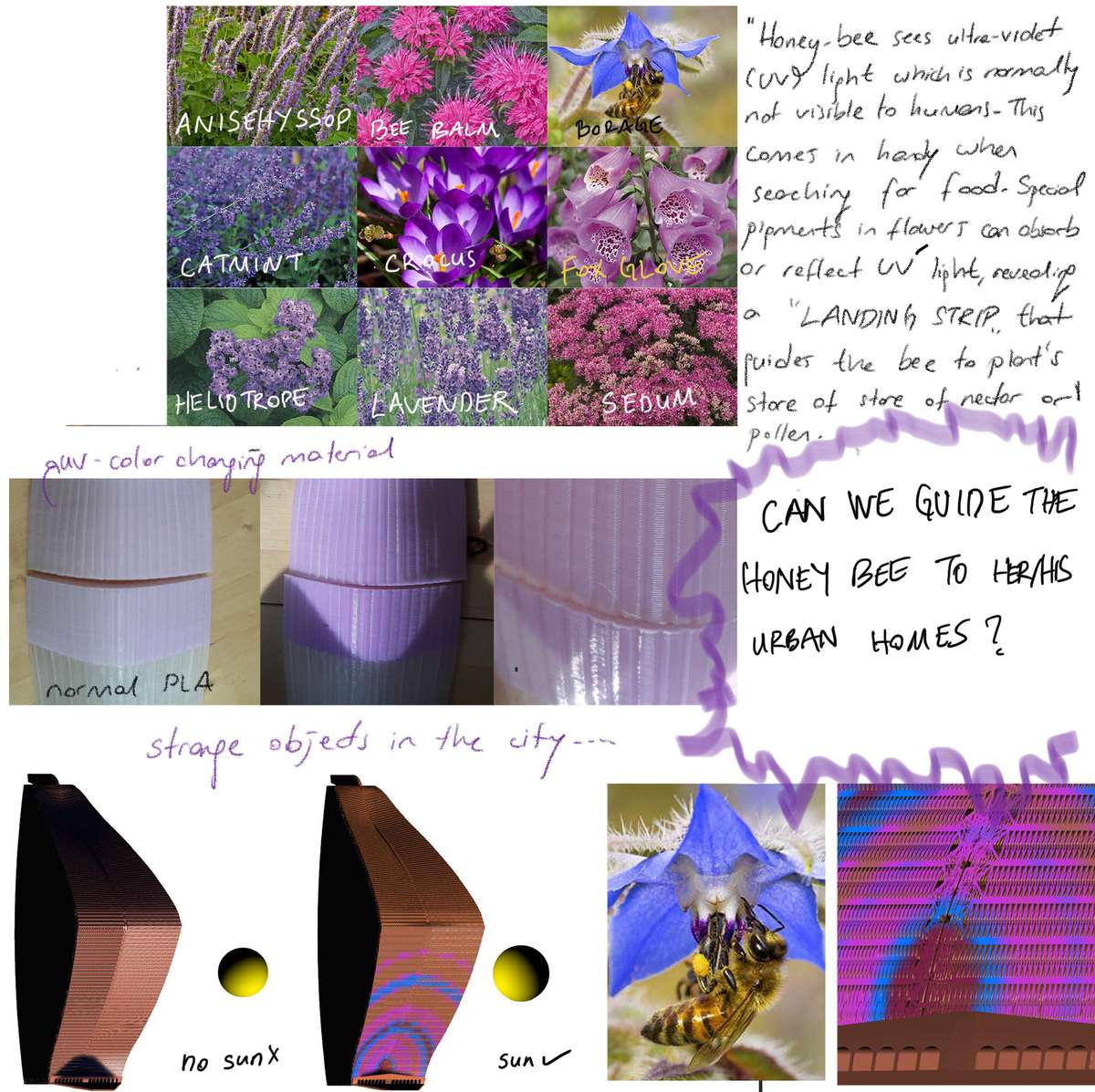
A fantasy for using color changing materials with the sunlight, to indicate the "bee gates" in the urban areas. The material turns into a very bee-friendly violet when its exposed to UV light. Bees perceive the world different than us. As an attribute to their color perception which is the UV scale, we get inspired by the color patterns they get attracted and populate the urban areas with bee friendly cavities with color changing gates. "LOOK!THERE IS A COLOR CHANGE, there must be bees inside!"

Urban PermApiculture (Permanent + Apiculture) is a system of beekeeping designed to imitate the bees’ habitat in nature as closely as possible. From left to right : Pointcloud drawing of an artificial tree cavity, cork-composite 3dprinted material inhabited by mushroom mycelium and image against light, Asya Ilgun taking temperature measurements from a natural tree cavity with a large bee colony inside.

A collaborative construction method can be applied initially for furniture scale objects. But what about an imaginary nature school. What if the an architectural construct can be occupied by other living organisms?
The drawings represent the porosity, decay and life of the built environment.
Three Dimension in Action // Citizen Edition
Three Dimension in Action // Citizen Edition

- New alliances
Doing your own thing is important. Bees, as important occupants our cities, are less and less prepared to accept imposed rules and patterns of behavior. However, current tradition in architecture clearly does not work when it comes to "life" other than humanbeings.
How can we create city oasis for the many species living alongside us? The answer lies behind the disciplines around design, science and technology. As architects, we are able to synthesise ideas, customise tools, find material alternates and write stories about "life" that is imagined.
This project is about bringing public and specialists together for a paradigm change in everyday objects in our urban landscapes. Sharing the know-how and know-why is where we start ..
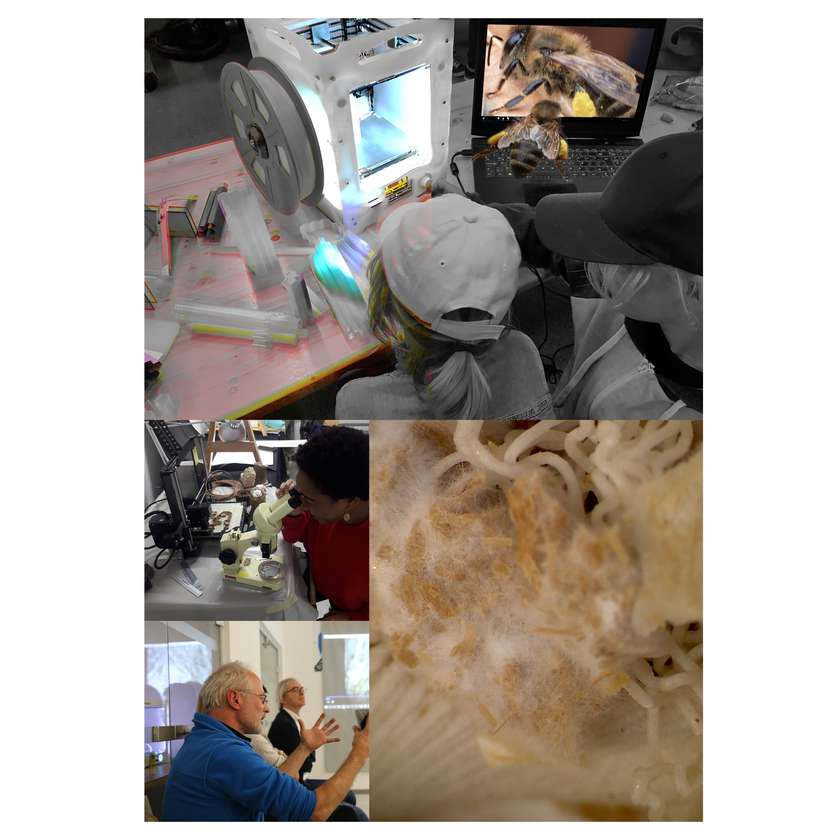
1) Citizen Scientists as kids. Setting : Copenhagen Makers Festival'17 / Bee A Bee Workshop by Asya Ilgun. Elisa and Elvira are exploring 3d printing with the color-changing materials (UV-light exposed) , how to make beehive modules. We see an urban Berlin honeybee with pollen stuck on her legs.
2) An architecture student interacting with a microscope, 3dprinter, experimental materials during a one week workshop in TU GRAZ.
3) Martin Grube (Dr. Mycology, Microbiology and Evolutionary Biology)
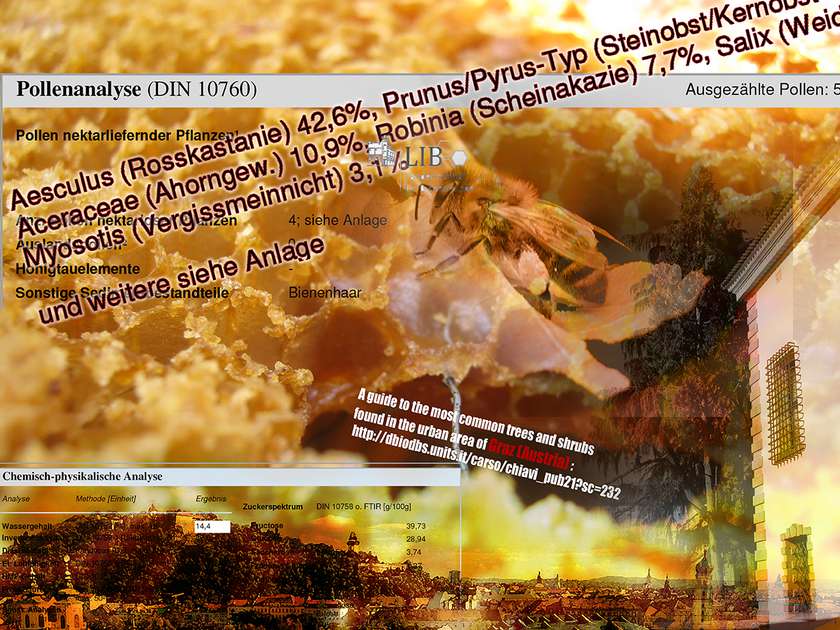
Honey! You taste like Graz.
Sharing the urban honey with the urban bees can allow us to taste the urban flora. Graz as a semi-urban area has specific trees and plants. Bees thrive better in the city nature, especially in cities with diverse floral tissue.
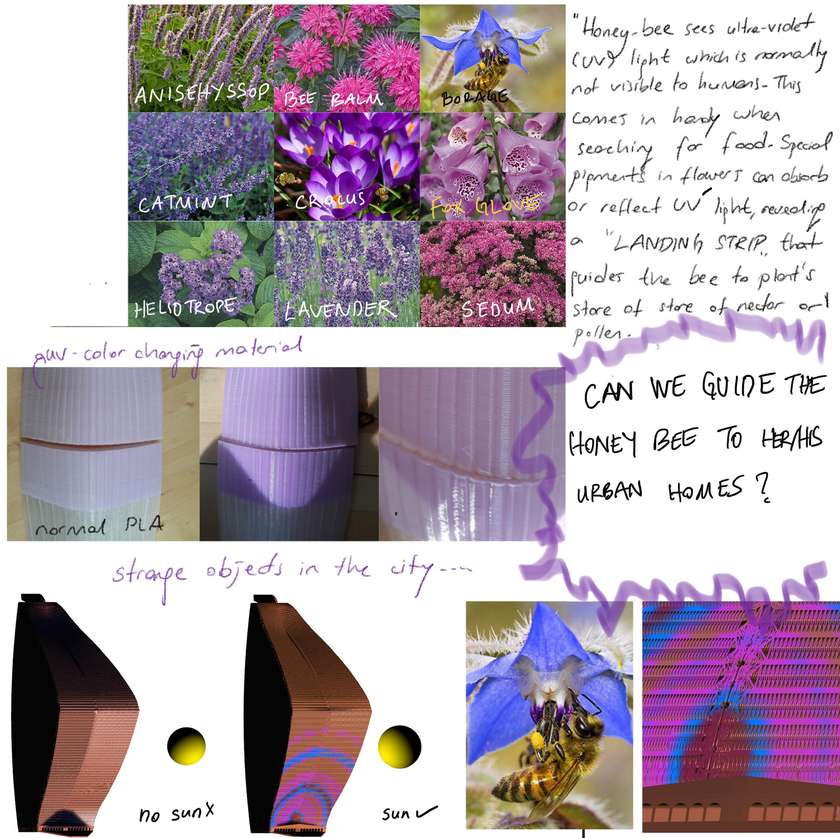
A fantasy for using color changing materials with the sunlight, to indicate the "bee gates" in the urban areas. The material turns into a very bee-friendly violet when its exposed to UV light. Bees perceive the world different than us. As an attribute to their color perception which is the UV scale, we get inspired by the color patterns they get attracted and populate the urban areas with bee friendly cavities with color changing gates. "LOOK!THERE IS A COLOR CHANGE, there must be bees inside!"
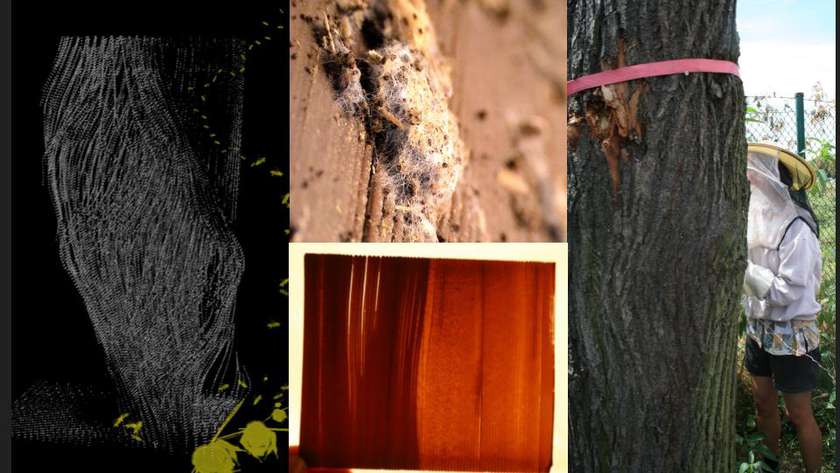
Urban PermApiculture (Permanent + Apiculture) is a system of beekeeping designed to imitate the bees’ habitat in nature as closely as possible. From left to right : Pointcloud drawing of an artificial tree cavity, cork-composite 3dprinted material inhabited by mushroom mycelium and image against light, Asya Ilgun taking temperature measurements from a natural tree cavity with a large bee colony inside.
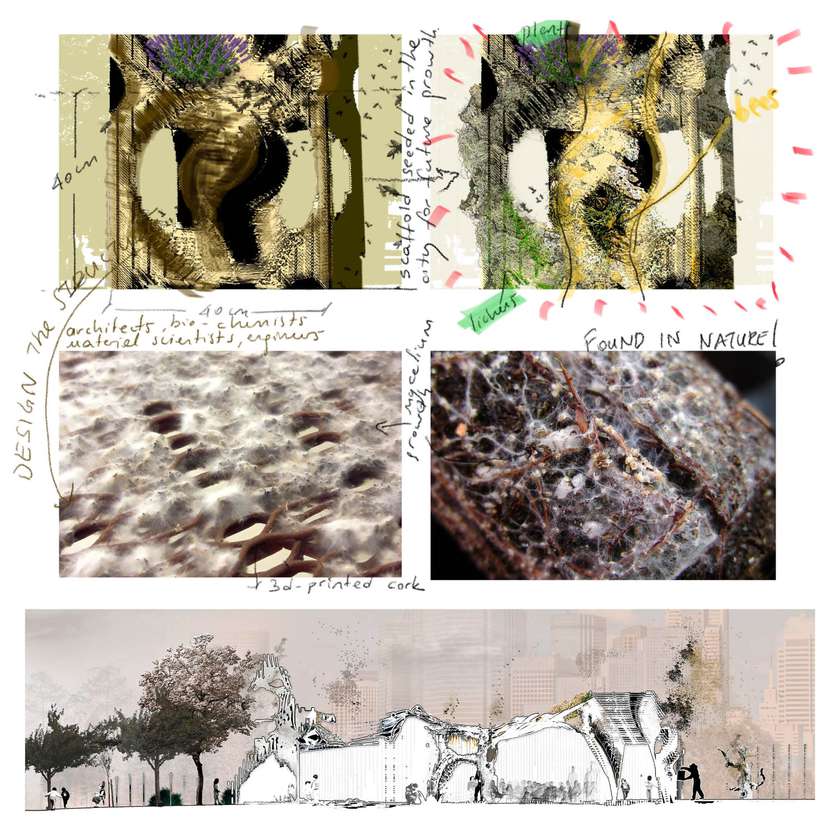
A collaborative construction method can be applied initially for furniture scale objects. But what about an imaginary nature school. What if the an architectural construct can be occupied by other living organisms?
The drawings represent the porosity, decay and life of the built environment.